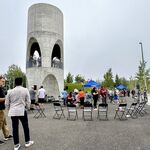mdrejhon
Senior Member
They use this phrase "15-minute service or better" in many places -- like on this page.To follow up on my previous comment about how Metrolinx has diminished the RER system by stating it was `minimum 15 minute frequency`.................... Language matters and by Metrolinx referring to RER this way greatly reduces people`s expectations and hence support of the system.
So I interpret that as the minimum-quality (good) rather than minimum interval (bad).
Even if they're spinning it the other way, "15-min or worse" -- it does not preclude gradual incremental upgrades (e.g. to 10-minute and 5-minute) or interleaving multiple routes to get high frequencies in core sections.
Indeed people will be more excited about 5-minute service. But we'll have to cross the 15-minute goal before reaching the 5-minute goal.





